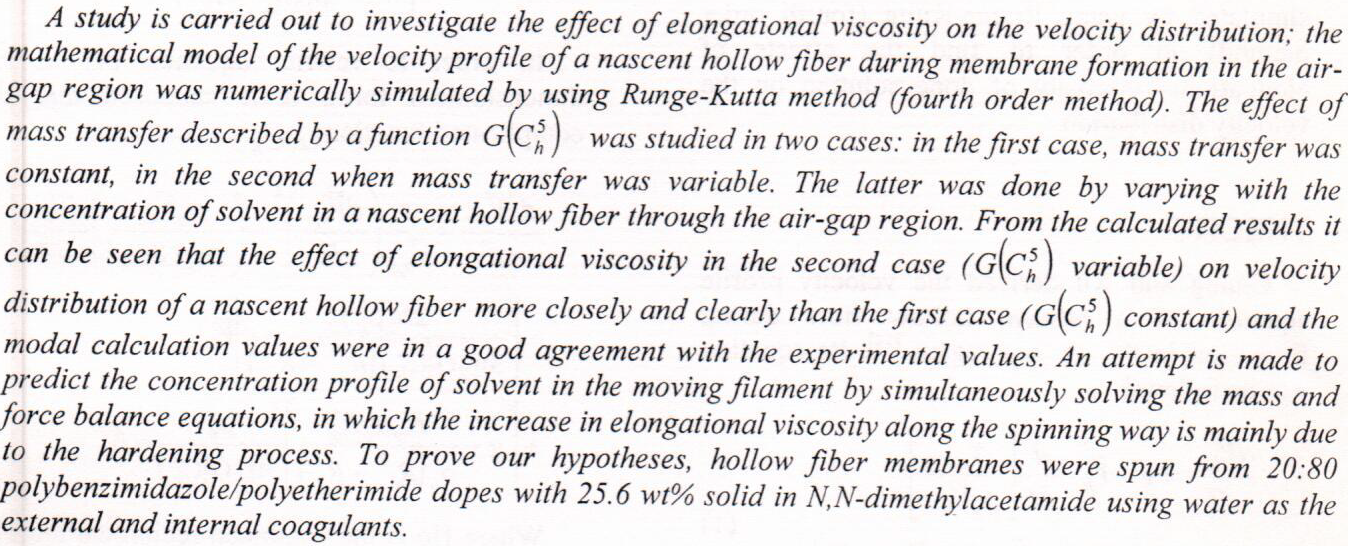
Exponential distribution is one of most common distributions in studies and scientific researches with wide application in the fields of reliability, engineering and in analyzing survival function therefore the researcher has carried on extended studies in the characteristics of this distribution.
In this research, estimation of survival function for truncated exponential distribution in the maximum likelihood methods and Bayes first and second method, least square method and Jackknife dependent in the first place on the maximum likelihood method, then on Bayes first method then comparing then using simulation, thus to accomplish this task, different size samples have been adopted by the searcher us
... Show MoreA new pavement technology has been developed in Highway engineering: asphalt pavement production is less susceptible to oxidation and the consequent damages. The warm mix asphalt (WMA) is produced at a temperature of about (10-40) oC lower than the hot asphalt paving. This is done using one of the methods of producing a WMA. Although WMA's performance is rather good, according to previous studies, as it is less susceptible to oxidation, it is possible to modify some of its properties using different materials, including polymers. Waste tires of vehicles are one of the types of polymers because of their flexible properties. The production of HMA, WMA, and WMA modified with proportions of (1, 1.5, and 2%) of rub
... Show More (1)
(1)
This research study the effect of surface modification and copper (Cu) plating carbon fiber (CF) surface on the thermal stability and wettability of carbon fiber (CF)/epoxy (EP) composites. The TGA result indicates that the thermal-stability of carbon fiber may be enhanced after Cu coating CF. TGA curve showed that the treatment temperature was enhanced thermal stability of Ep/CF, this is due to the oxidation during heating. The Cu plating increased the thermal conductivity, this increase might be due to reduce in contact resistance at the interface due to chemical modification and copper plating and tunneling resistance.
The increase of surface polarity after coating cause decreas
... Show More (7)
(7)
Polarization is an important property of light, which refers to the direction of electric field oscillations. Polarization modulation plays an essential role for polarization encoding quantum key distribution (QKD). Polarization is used to encode photons in the QKD systems. In this work, visible-range polarizers with optimal dimensions based on resonance grating waveguides have been numerically designed and investigated using the COMSOL Multiphysics Software. Two structures have been designed, namely a singlelayer metasurface grating (SLMG) polarizer and an interlayer metasurface grating (ILMG) polarizer. Both structures have demonstrated high extinction ratios, ~1.8·103 and 8.68·104 , and the bandwidths equal to 45 and 55 nm for th
... Show MoreMicrowave heating is caused by the ability of the materials to absorb microwave energy and convert it to heat. The aim of this study is to know the difference that will occur when heat treating the high strength aluminum alloys AA7075-T73 in a microwave furnace within different mediums (dry and acidic solution) at different times (30 and 60) minutes, on mechanical properties and fatigue life. The experimental results of microwave furnace heat energy showed that there were variations in the mechanical properties (ultimate stress, yielding stress, fatigue strength, fatigue life and hardness) with the variation in mediums and duration times when compared with samples without treatment. The ultimate stress, yielding stress and fatigue streng
... Show Moreيتضمن البحث دراسة لزوجة محاليل تحتوي على املاح كلوريد البوتاسيوم وبروميد البوتاسيوم في مزيج من الماء وداي مثيل سلفوكسايد 60% وزنا داي مثيل سلفوكسايد.وقد اجريت الدراسة بست درجات حرارية مختلفة ونوقشت امكانية في ضوء معادلة جونز- دول حيث اخذ بنظر الاعتبار الحجم الايوني والشحنة وشكل جزيئات المذاب.
This paper displays the effect of uncoated and coated chopped carbon fibers with alumina Al2O3 or Tri calcium phosphate (TCP) on the impact strength of acrylic poly methyl methacrylate (PMMA) denture base resin. To improve bonding between carbon fibers and coating materials powders, the surface of carbon fibers has been treated with Para amino benzoic acid (C9H10N2O3) and poly vinyl alcohol (PVA) was also used. The morphology of the coating layers has been examined by field emission scanning electron microscope (FE-SEM). From the results, PMMA reinforced with uncoated chopped carbon fiber has high impact strength value but still have bad aesthetic. Samples prepared b
... Show More (5)
(5)
Reinforced concrete (RC) beams containing a longitudinal cavity have become an innovative development and advantage for economic purposes of light-weight members without largely affecting their resistance against the applied loads. This type of openings can also be used for maintenance purposes and usage space of communication lines, pipelines, etc. RC beams are primarily loaded in the plane of the members, which are two-dimensional in a plane stress state and the dominant structural behaviours include bending, shear, or combination of both. In the present study, six numerical models of RC beams with and without openings were simulated by using commercial finite element software ANSYS to evaluate the structural behaviours of those b
... Show More (17)
(17)
 (15)
(15)
